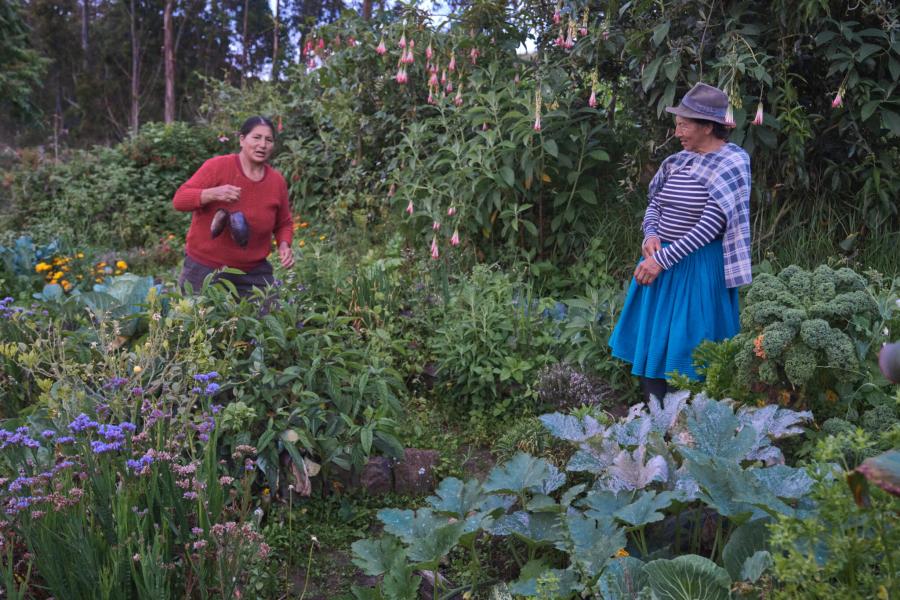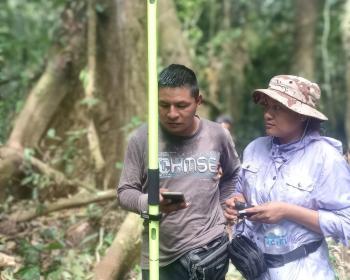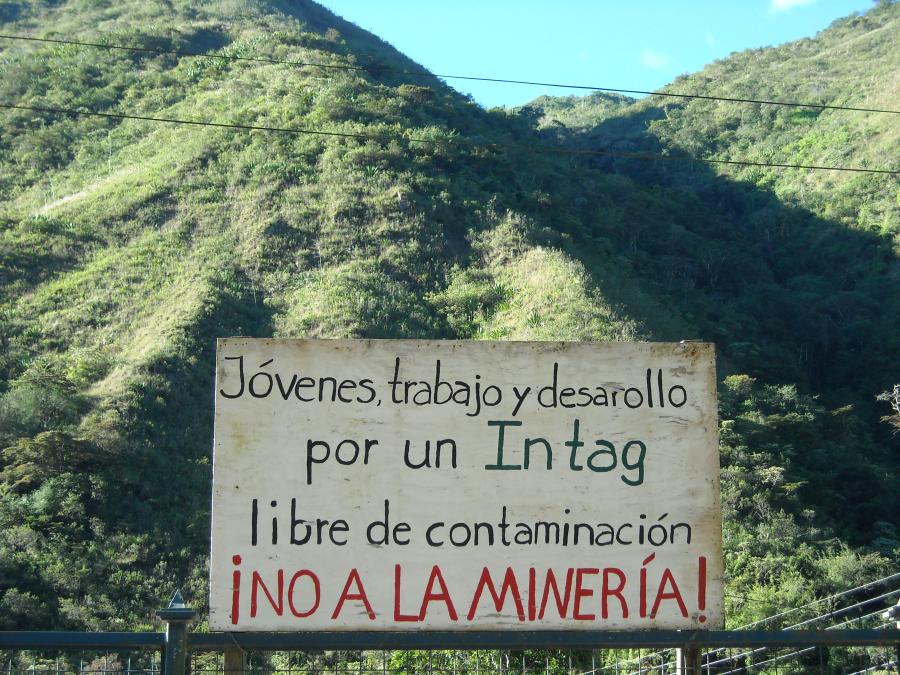Over the course of the last decade, Latin American indigenous leaders have transformed the indigenous rights discourse. While traditional human rights claims persist to stop killings, desist from seizing land and natural resources, end forced relocation, and cease cultural denigration, indigenous leaders also are insisting that states respect their obligations to give indigenous peoples power and voice. High on the list are demands for inclusive and effective citizenship with dignity and without loss of identity. New international treaties and intergovernmental indigenous rights bodies, meanwhile, support and emphasize state obligations to advance the realization of indigenous peoples’ participatory rights. Some of the obstacles to indigenous peoples’ full political participation as citizens have included the effects of structural asymmetry during negotiations, the difficulties of engaging in effective dialogue as new opportunities are presented, challenges to their representational legitimacy, and relegation to the “back burner” when political or economic stress leads to political retrenchment. These hurdles are illustrated by developments in Ecuador during the past decade.
All human rights are paired with a corresponding duty by states to ensure that those rights are respected. For those sometimes referred to as “negative” rights, the state has a duty to refrain from doing something (such as torturing someone or subjecting them to prolonged arbitrary detention). In other cases, states have a “positive” duty to ensure the immediate or progressive realization of rights. The duty to provide rights such as education, health care, or voting rights can be expensive, and governments often argue that the costs are prohibitive. Moreover, indigenous rights, particularly those related to consultation and consensus on development projects or, more broadly, self-determination, threaten over 500 years of status quo. Indigenous rights relocate previously marginal political actors directly into the national political arena and involve them in national development decisions rather than make them objects of those decisions. Consequently, arguments for indigenous rights, particularly those that relate to group rights, do not enjoy universal support. Governments that previously made decisions for such groups are obviously challenged, but even mainstream human rights groups tread lightly across this complex and, generally, poorly understood cultural landscape.
Moreover, while citizenship rights have become a major thrust of indigenous organizations, demands for civic and political inclusion in decision-making bring with them new sets of practical problems. Providing forums for dialogue, deliberative democracy, and argumentation does not un-stack the decks against indigenous speakers. They must still negotiate in the context of structural asymmetry, in which the lion’s share of power and wealth is in the hands of states or other entities with whom they are negotiating. Advancing rights claims amid persistent structural asymmetry is one of the greatest challenges for indigenous human rights practice in the 21st century.
Beyond the clear obstacles that structural asymmetry presents to genuine participation and clear dialogue, indigenous leaders also face linguistic, experiential, and political challenges. How, many leaders ask, does one step into new space effectively once a door for dialogue is opened? Such questions reflect inexperience and the need for training rather than some inherent inability or impossibility of argumentation. In addition, and particularly for indigenous organizations, representation is a constant challenge. Ideally and in practice, genuine representation builds from informed consent and the ability to reach points of consensus amid a variety of potentially conflicting needs and concerns. But the debates surrounding citizenship rights are generally promoted by indigenous organizations, and often through national and international forums. Neither the arguments nor the settings necessarily reflect the local priorities of the many rural communities that the organizations claim they represent. Leaders, therefore, are often challenged by outsiders to prove that their expressed demands indeed represent those of their communities, aware that any hint of disagreement will be used to diminish indigenous leaders’ legitimacy.
On the other hand, local “horizontal dialogue” among members of an indigenous group or among members of neighboring indigenous groups serves to acknowledge and respond to local issues. Such give-and-take—or local checks and balances—are permanent, normal, and healthy aspects of participatory democracy. Despite external challenges to representation, participation and discourse are integral parts of most established indigenous organizations, as illustrated in Ecuador.
Growing Empowerment of Indigenous Organizations
Beginning in the 1970s, and growing rapidly during the last decade, indigenous peoples throughout Latin America have organized at the local, regional, national, and international level. They are now a political force, not simply a category of marginal victims. Major advances in indigenous national and international human rights norms and procedures have accompanied and supported the movement’s claims.
By the late 1990s, expressing similar concerns over the status and role of civil society, many non-indigenous Latin American citizens were acknowledging the flaws of electoral democracy and were demanding broader participatory and discursive practices. Indigenous peoples thus became outspoken and visible advocates, indeed symbols, for political change, as illustrated by their role and influence in drafting Bolivia’s constitutional reforms, Colombia’s 1991 constitution, and Ecuador’s 1998 constitution.
But as indigenous peoples have come to learn, implementing citizenship rights is not simply a matter of legislating and then applying laws, but of discussing and negotiating their interpretation. Dialogue, in turn, is not simply a matter of sitting down and reaching a final agreement. Indigenous peoples’ organizations often use dialogue to create public space for themselves as well as to consider critical community issues, not to seek immediate closure. Natural resource disputes afford perhaps the clearest examples of this dual role for dialogue. The high profile conflicts now surrounding international natural resource exploitation—oil, gas, minerals, timber, and water—have become, in part, public means to expose the gaps between legislation and practice, and to pressure governments to implement the new norms. This is not to suggest that, either at a local or national level, natural resources disputes are fabricated or that claims are not legitimate. Quite the contrary, many indigenous communities are working with human rights and development groups to control resource use and mitigate related environmental damage. Nonetheless, at another level, indigenous organizations have used highly visible natural resource disputes strategically to catapult themselves, legitimately and quite effectively, into larger national debates over consultation and participation.
Ecuador: A Case Study of Citizenship Rights
Ecuador is arguably the most visible and advanced example of the development, as well as the current dilemmas, in indigenous human rights. That country saw the first emergence of ethnically defined indigenous organizations in Latin America. Subsequently, the increasing power and profile of indigenous peoples was exhibited during widely publicized protest demonstrations (levantamientos) in June 1990, which established the Confederation of Indigenous Nationalities of Ecuador (CONAIE) as a national protagonist; in January 2000, which precipitated the collapse of the presidency of Jamil Mahuad; in February 2001, when the organizations again rose in opposition to national politics; in late 2002, when indigenous candidates won significant numbers of local elections; and in early 2003, when several prominent indigenous leaders were elevated to presidential cabinet positions, only to be dismissed about six months later. Ecuador’s domestic indigenous movement has received widespread international support, in particular because local indigenous concerns, especially about the environmental and social impact of oil development in the Amazon basin, overlap with international non-governmental interests.
Like most successful social movements, Ecuador’s indigenous organizations began locally and spread widely because the movement responded to issues that resonated within indigenous communities. The organizational shape of the movement emerged from the Amazon region when, in the 1960s, Andean colonists first began to flow into the region in large numbers. Local indigenous groups in impacted areas aggregated into ethnic federations, and in the 1980s joined into a regional pan-ethnic federation, the Confederation of Indigenous Nationalities of the Ecuadorian Amazon (Confederación de las Nacionalidades Indígenas de la Amazonia Ecuatoriana, CONFEIAE).
In the 1980s, CONFEIAE’s normally defensive posture shifted to include demands for recognition and demarcation of traditionally used or occupied lands. The shift to territorial claims signified a quantum leap in indigenous relations with the state by seeking to change the basic concepts of land rights, not simply protecting their boundaries. By redefining land claims as rights—to be defined and negotiated jointly with the state—the indigenous debates served as a means to enter the political arena, without loss of self-identity.
In 1990, the first indigenous General Uprising (Levantamiento General) placed indigenous citizenship demands onto center stage. This non-violent direct action also moved broadly organized indigenous political strategies out of the Amazon and merged them with what had previously been individual, and not particularly successful, Andean community responses to local disputes. CONAIE emerged as the most prominent national actor after the 1990 levantamiento. Throughout the 1990s, indigenous leaders worked to insert themselves into the state and increase the national visibility of CONAIE, while maintaining the representation and legitimacy obtained from the base-level communities. Among the principal demands of the 1990 levantamiento were formal recognition of Ecuador as a multiethnic and multicultural state, and respect for communal indigenous land tenure.
CONAIE subsequently and progressively drew itself away from a focus that rested solely on single issues, short-term actions, and exclusively “indigenous” problems. The leadership argued that single-cause demands had distinguished indigenous peoples too much from the rest of the national society and thus promoted a false dichotomy between “indigenous peoples” and “national society.” For Ecuador’s indigenous leaders, ethnic distinctions were the national fabric, not simply an odd strand dangling from it. Indigenous peoples thus positioned themselves, largely independent of non-indigenous human rights organizations, to redefine, through debate, the economic and political practices that reflected and supported what they defined as a “plurinational” country. In doing so, CONAIE replaced the previously general and homogenizing category of “indio” with that of distinct “nationalities,” thereby institutionalizing diversity. The overall goal was simple—inclusion as equals in a plurinational state. CONAIE argued that only when the state legislative, judicial, and executive branches reflected all national differences would Ecuador be truly democratic.
In 1996, a new Election Law (Ley de Elecciones) enabled new parties to enter into the political process. Indigenous peoples helped to establish, and later claimed as their own, the Movimiento de Unidad Plurinacional Pachacutik, or Pachacutik, as it is most commonly known. Pachacutik, the Quicha term for recreation of the earth, allowed the Indians to end alliances with traditional patronage-based political parties, and to create an independent political body that accurately and consistently reflected and responded to indigenous interests.
In the months before the 1998 election, a constitutional assembly, which included numerous Pachacutik and other indigenous delegates, drafted Ecuador’s new constitution, which recognized indigenous rights and promised to consolidate Ecuador while also recognizing regional diversity of peoples, ethnic groups, and cultures. Several articles drew directly from the International Labor Organization Convention 169, ratified by Ecuador in 1998. The new constitution established indigenous peoples as legal subjects with broad collective as well as individual rights, and placed strong emphasis on indigenous participation in all aspects of policy and practice affecting them.
In the August 1998 national elections, Pachacutik gained additional seats. Initial relations between indigenous political actors and the government of President Jamil Mahuad were good. Among other items, the government agreed to regular dialogue with CONAIE. However, in February 1999, a banking crisis and subsequent scandals dominated political debate and economic life. Funds promised to indigenous communities became unavailable, and dialogue stalled. In March 1999, CONAIE called for another levantamiento. By expressing widespread public frustration with unpopular issues, CONAIE obtained widespread support and peacefully brought the country to a halt. The subsequent March 19, 1999, agreement between CONAIE and Mahuad’s government established a dialogue with indigenous peoples and an additional national dialogue, promoted by CONAIE, that included other sectors of civil society. But when the national economic situation deteriorated further, the CONAIE-led plan for participatory decision-making was tabled.
The continued marginalization of indigenous organizations from any decision-making provoked, in part, an unlikely alliance with young army officers, who supported and later joined with CONAIE’s leadership in the levantamiento and subsequent coup of January 2000, which ousted Mahuad. However, rather than accept the tripartite (military, social movements, and indigenous peoples) governing alliance CONAIE called for, the military simply replaced Mahuad with his vice president, Gustavo Noboa.
In the ensuing months, CONAIE challenged President Noboa’s “neo-liberal” economic policies, arguing that they left little space to attend to indigenous needs and requests. As the anniversary of the January 2000 coup arrived, CONAIE called for another levantamiento. However, during his first year in office, Noboa had deftly altered the armed forces and confidently warned that the army and police would put down any form of “civil disruption.” Nevertheless, in late January 2001, CONAIE mobilized Indians throughout the country. Unlike previous levantamientos, indigenous peoples were met with considerable governmental force including violence. The indigenous peoples’ non-violent demonstrations against abuses of basic rights won wide popular support, while the government’s repressive and violent reaction was highly publicized, domestically and internationally, and generally condemned. On February 6, 2001, Noboa agreed to meet with CONAIE leaders, and the two parties jointly drafted and signed a 20-point agreement, which included open dialogue with CONAIE on the solution of Ecuador’s financial, social, commercial, and monetary policies. With this agreement, CONAIE resumed leadership status in the development of national policy and, by including non-indigenous sectors of civil society into the dialogues, indirectly advanced its agenda for plurinational governance.
In the 2002 elections, Lucio Gutiérrez’s successful campaign for president obtained much of its support from Ecuador’s indigenous peoples. Equally important, the non-governmental organization CONAIE and political party Pachacutik made major strides. Indigenous candidates won nine congressional seats, placed nine members in powerful provincial councils, and took 55 seats in municipal councils. President Gutiérrez‘s first cabinet included two of Ecuador’s most prominent, respected, and outspoken indigenous leaders—the co-founders of Pachacutik. Nina Pacari, a lawyer and congresswoman from the Otavalo region, was named Ecuador’s—and the world’s—first indigenous woman Minister of Foreign Relations. With her, and heading the equally important Ministry of Agriculture, was Luis Macas, another founder and ex-president of CONAIE, who, years earlier, was Ecuador’s first indigenous congressman.
By early 2004, however, Gutiérrez’s policies had retrenched. Rancor with indigenous organizations and disagreements within the cabinet became public. In August 2003, Gutierrrez dismissed his indigenous cabinet members. CONAIE and Pachacutik abandoned their support for the Gutierrez government. CONAIE’s rapidly souring relations with Gutiérrez worsened with an as-yet unresolved assassination attempt against CONAIE’s president, Leonidas Iza, on February 1, 2004.
Despite setbacks at the national level, Pachacutik still holds 19 out of 215 municipalities and five out of 22 provincial governorships. These numbers are not insignificant. At the mayoral level, indigenous leaders have emphasized the sort of participatory governance and budgeting that, in the future, they hope to install at the national level, including the progressive and sustainable deepening of simple ideas into formally recognized participatory rights principles and inclusive practices. Now, it is not only the accumulation of space that matters, but also how that space is occupied and utilized that reveals current approaches to rights obligations. The grassroots manner in which indigenous participation in governance has taken hold in Ecuador strongly suggests that, if and when their ideas and practices of participatory governance move up the political ladder, that ladder will be well reinforced by experienced and well-informed citizens—non-indigenous and indigenous. Political asymmetry will thus be diminished more by progressive attrition than by formal decree.
Ongoing Discourse to Promote Human Rights
During the U.N. International Decade for the Rights of Indigenous People, indigenous peoples in Latin America have advanced the “progressive realization” of their social, economic, and cultural rights through the very processes they now seek to institutionalize. However, some of their critics—government officials and executives of extractive industries who now meet regularly with the indigenous leaders—wonder when they will stop demanding more meetings and talks, and simply rest satisfied with their progress. Such comments, however, miss the point of progressive realization as that process relates to citizenship rights. One neither can nor should expect closure. Ongoing discourse assures an approach to democracy that is consistent with human rights norms. While indigenous peoples most likely will never recover what they lost during five centuries of oppression, colonization, and domination by non-indigenous-led governments, they are now positioning themselves to carry out their right to participate meaningfully in the debate about their future. In that manner they have gained the hope of restoring their personal and group dignity.
Theodore Macdonald is a lecturer in social studies and anthropology at Harvard University. This article is excerpted from "Approaching Indigenous Rights in the Early 21st Century: International Norms, Social Movements, and Citizenship Claims " which will appear in From Ideals to Tools: Economic, Social and Cultural Rights in Latin America. Cultural Survival gratefully thanks the Asociacion Pro Derechos Humanos of Peru (APRODEH) and Alicia Ely-Yamin for granting us permission to reproduce the excerpt here.



